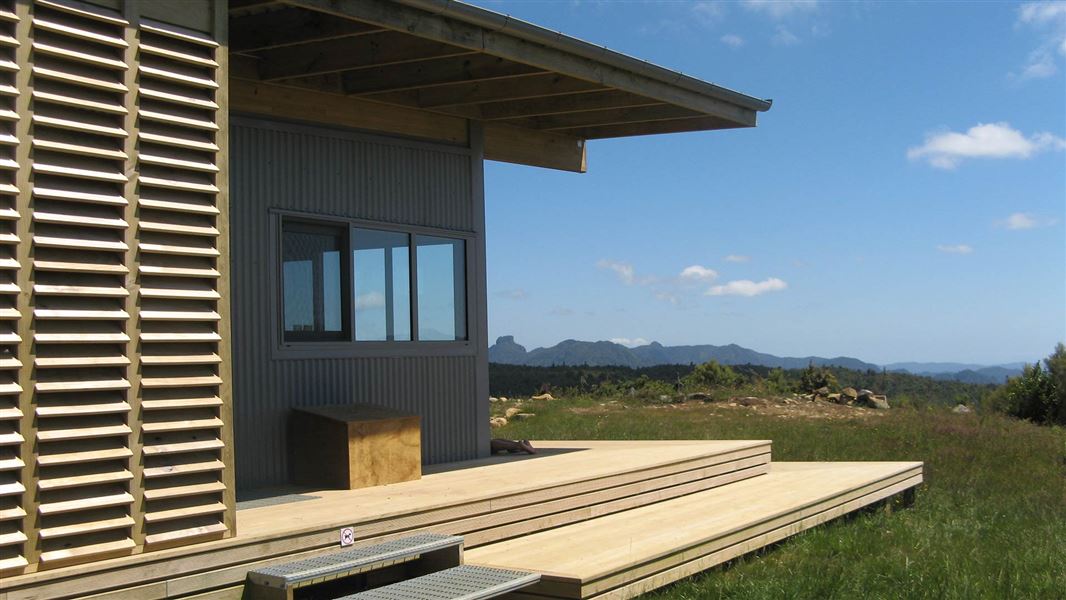Hope and hard toil
In 1880, the original European settlers, Thomas and Agnes Crosbie took up one of the five lots made available for farming. Born in Scotland in 1840, Thomas Hunter Crosbie had immigrated to New Zealand on board the ship Green Jacket, arriving at Auckland late in 1863. Agnes arrived there in 1865 on the Louisa. They had seven children, including sons Jim, Jack and Clem.
On their block the Crosbies cleared bush to farm the land and built a three-bedroom homestead, a two-bail cowshed and a dairy for producing cream and butter. The Crosbies stayed and farmed the land here for longer than other families and the area became known as Crosbies Settlement.
Gold in the hills, gum and gardens
In 1917 the Crosbies sold their block to Joshua and Elizabeth Lyes. Joshua was a Thames miner who had contracted miners’ lung disease and was advised to live at a higher altitude. The Lyes family made a living from farming and gardening, selling their surplus produce in and around Thames. They built stables with timber pit-sawn onsite and mined coal from near the Waiwawa River at the eastern end of the property.
Any extra income to help develop the land and provide a living was very useful. The Thames goldfield opened in 1867 and Thames very soon after became a thriving town. Kauri gum was in high demand, used as the preferred resin in varnish. Gum traders came to Thames to buy gum in considerable quantity. Most arrived by ship from Auckland.
There were vast amounts of gum on the Coromandel and the Crosbie boys spent a great deal of time collecting it. Using a packhorse, they took the gum into Thames to sell to the traders. This gave the Crosbie family an income while the block was being cleared and the farm established.
An end to farming
Farming was a challenge here, particularly when dealing with the severe weather. The only access was by foot, horseback or horse-drawn sledge and the weather made this more difficult.
The settlement struggled to survive. In 1923 when the Tapu–Coroglen Road was under construction, routing the road to Thames via Crosbies Settlement, rather than through Tapu, was proposed. The route would have been a boost to farming, nearly 10 kilometres shorter and less steep. But there was an existing road connecting Tapu and Thames. This was the cheaper option and the settlement missed out on a road. Crosbies Settlement was abandoned in 1926.
Several attempts at farming continued, but by the late 1960s the cleared area had mostly reverted back to bush and the only building remaining was a small single-stand woolshed.
...and then a park
In 1970 Coromandel Forest Park was established. Crosbies Settlement became part of the park and the woolshed was converted into a trampers’ hut by the NZ Forest Service, who managed the park at the time. This hut blew down in the late 1980s. Crosbies Hut was built by DOC in 2010. There are still some fences from the farming years alongside the track leading up to the hut.
Tragedy in the park
In 1989 two Swedish tourists, Urban Höglin and Heidi Paakkonen, went missing while tramping in the area. Despite a thorough search concentrated around Crosbies Settlement, only one body was ever found, about 70 kilometres away. There is a memorial to Urban and Heidi near the hut.
